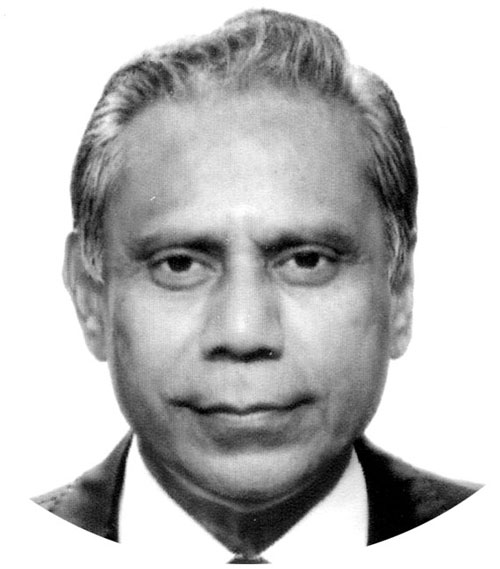The new Afghan peace plan
THE two-day Heart of Asia Conference for peace in war-torn Afghanistan concluded in Tajikistan’s capital Dushanbe last week.
The conference should have assumed urgency with the date of May 1st looming close, by which US President Joe Biden had promised to withdraw foreign troops from Afghanistan, however, meeting the deadline appears nigh impossible, much to the chagrin of the Taliban.
One outcome of the conference was the Afghan President Ashraf Ghani voicing a three-step process for “making, building and sustaining peace” that he said should result in a “sovereign, democratic, united, neutral and connected Afghanistan.”
Unfolding his peace plan, the Afghan President proposed that the first phase of his plan would involve coming to a negotiated political settlement with the Taliban that was endorsed by a Loya Jirga, or a traditional grand assembly of influential Afghans.
Ashraf Ghani declared that the process would also include a cease-fire as well as reaching consensus on the principles of forming a “government of peace-building within the framework of the constitution with a time-bound mandate culminating in an internationally supervised and monitored presidential election.”
The Afghan President envisaged that this phase should end in elections under international supervision and pave the way for the phase of sustaining peace through “national reconciliation, reintegration of combatants and refugees, defining our new security, development and governance priorities.”
It is noteworthy that while the proposal of forming a transitional government is in line with one proposed by the United States, it differs in its emphasis of sticking to the framework of the current constitution, which the Afghan Taliban reject.
Another departure from the original plan is its emphasis on making elections the basis of transferring power.
The US proposal envisions a transitional “peace government” that was appointed “according to the principle of equity between the two Parties to this Agreement, with special consideration for the meaningful inclusion of women and members of all ethnic groups throughout government institutions.” Peace has evaded Afghanistan for the last four decades.
The [erstwhile] Soviet Union invaded Afghanistan in 1979 but were forced to withdraw after a decade of guerrilla warfare by the Afghan Mujahideen.
Unfortunately, the various warlords engaged in internecine warfare to gain supremacy.
The first meeting between the warring factions, the government officials and the rebels, was held in Kabul in the 1990s through the mediation efforts of former President of Afghanistan Burhanuddin Rabbani.
Following 9/11, US-led NATO forces invaded Afghanistan and defeated the Taliban who regrouped and became a force to reckon with.
Afghan Taliban, the Daesh and various warring factions continue to wreak havoc in the war ravaged country.
The Heart of Asia process was launched in 2011 in Istanbul, Turkey, to help find a solution to the challenges facing Afghanistan.
Fifteen countries participate in the process, while another 17 countries and 12 regional and international organizations support it.
The two-day Heart of Asia conference in Tajikistan’s capital, Dushanbe, is one of a host of regional conferences that have been taking place to try to jump start a stalled Afghan peace process.
The two sides to this decades-long conflict started negotiating in September of last year in Qatar’s capital, Doha, but have yet to make progress.
Following another regional conference on Afghanistan hosted by Russia earlier last month, the US, Russia, China and Pakistan issued a joint statement calling on all parties in Afghanistan to reduce violence and for the Taliban to forego their ‘spring offensive,’ the yearly renewal in attacks after a winter lull, in order to facilitate peace negotiations. The Taliban sent signals that it may be ready to yield.
“We have floated a plan under which all related sides will reduce violence. But this is not a cease-fire,” Taliban spokesman Mohammad Naeem told the media.
The Dushanbe conference comes in advance of another meeting in Turkey organized by the United Nations which both Taliban and the Afghan government are likely to attend.
The Turkey conference, expected in the next couple of weeks, is being viewed as a game changer in the Afghan peace process.
President Ashraf Ghani is expected to take this plan to the conference in Turkey that is being watched carefully as part of a US push to boost regional diplomacy.
US Secretary of State Antony Blinken, while talking to CNN in a recent interview, disclosed that the US has invested energy into the diplomatic effort in sharing some ideas with the Afghan government and the Taliban, in getting them together, especially in the conference in Turkey.
He declared that the UN will play a more prominent role in bringing people together and also, getting all the neighbours and other countries who have both an interest and an influence in Afghanistan to actually engage.
The push comes ahead of a deadline the US is unlikely to meet to withdraw all foreign forces from Afghanistan.
The 01 May deadline is part of a deal the US negotiated with the Taliban and the militant group has threatened bloody consequences if the deal is violated.
Experts fear if the foreign forces withdraw from Afghanistan without a political settlement, the country could descend into a bloody civil war as it did once before in the 1990s after the Soviets left.
Various Foreign Ministers while addressing the Heart of Asia Conference, said soothing things about a political settlement in Afghanistan needed to be inclusive, broad-based and comprehensive in order to be successful but peace in Afghanistan remains elusive.
—The writer is retired PAF Group Captain and a TV talk show host.










